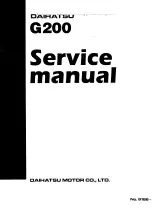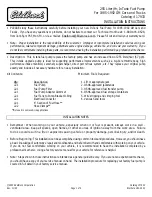
similar could cause a fire or an electric shock.
There is a risk of fatal injury.
To avoid hazardous situations, observe the
following:
R
Only connect the charging cable to mains
sockets:
-
which have been properly installed and
-
which have been inspected by a qualified
electrician
R
For safety reasons, only use the charging
cables supplied with the vehicle, or charg-
ing cables which have been approved for
use with this vehicle.
R
Never use a damaged charging cable.
R
Do not use:
-
extension cables
-
extension reels
-
multiple sockets
R
Never use socket adapters to connect the
charging cable to the mains socket. The
only exception being if the adapter has
been tested and approved by the manufac-
turer for charging the high-voltage battery
of an electric vehicle.
R
Observe the safety notes in the operating
instructions for the socket adapter.
G
DANGER
Connecting the charging cable to the vehicle
via an incorrectly installed wallbox or by
means of adapters, extension cables or simi-
lar could cause a fire or an electric shock.
There is a risk of fatal injury.
To avoid hazardous situations, observe the
following:
R
Only connect the charging cable to a wall-
box if:
-
the wallbox is properly installed
-
the wallbox has been inspected by a
qualified electrician
-
the charging cable is not damaged.
R
Do not extend the charging cable.
R
Do not use an adapter.
R
Always observe the safety notes in the wall-
box's operating instructions.
The vehicle's high voltage electrical system is
under high voltage.
R
Do not tamper with the high-voltage compo-
nents or the orange cables of the high-voltage
electrical system.
R
Do not touch high-voltage components or the
orange cables of the high-voltage electrical
system when a vehicle has been involved in a
crash.
R
Never touch damaged components or the
damaged orange cables of the high-voltage
electrical system.
R
Do not remove the covers of the high-voltage
electrical system components that are
marked with a warning sticker.
General notes
Charging options
The high-voltage battery can be charged as fol-
lows:
R
through recuperation while the vehicle is in
motion (
Y
page 21)
R
through the combustion engine while driving
in CHARGE operating mode (
Y
page 22)
R
with the relevant charging cable at a mains
socket while the vehicle is stationary (mode
2)
R
at a wallbox while the vehicle is stationary
(mode 3)
R
at a charging station while the vehicle is sta-
tionary (mode 3)
The high-voltage battery can be charged in a
nominal voltage range from 100 V to 240 V.
You can view the condition of charge of the high-
voltage battery in the energy flow display of the
on-board computer (
Y
page 42).
Stationary charging
Only use the charging cable supplied with the
vehicle or a charging cable approved for the
vehicle.
If a charging cable is connected to the vehicle,
you cannot start or move the vehicle.
30
Charging the high-voltage battery
Driving
and
parking
















































